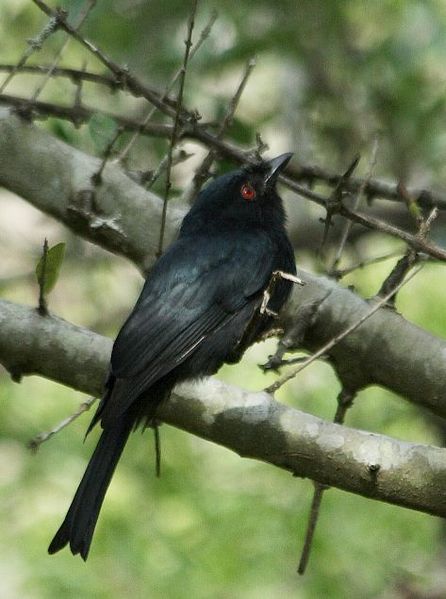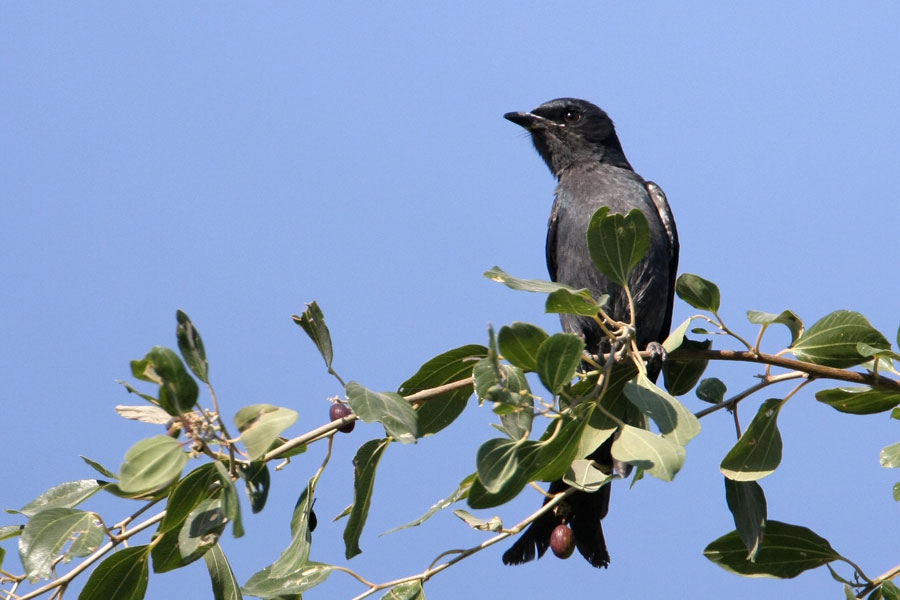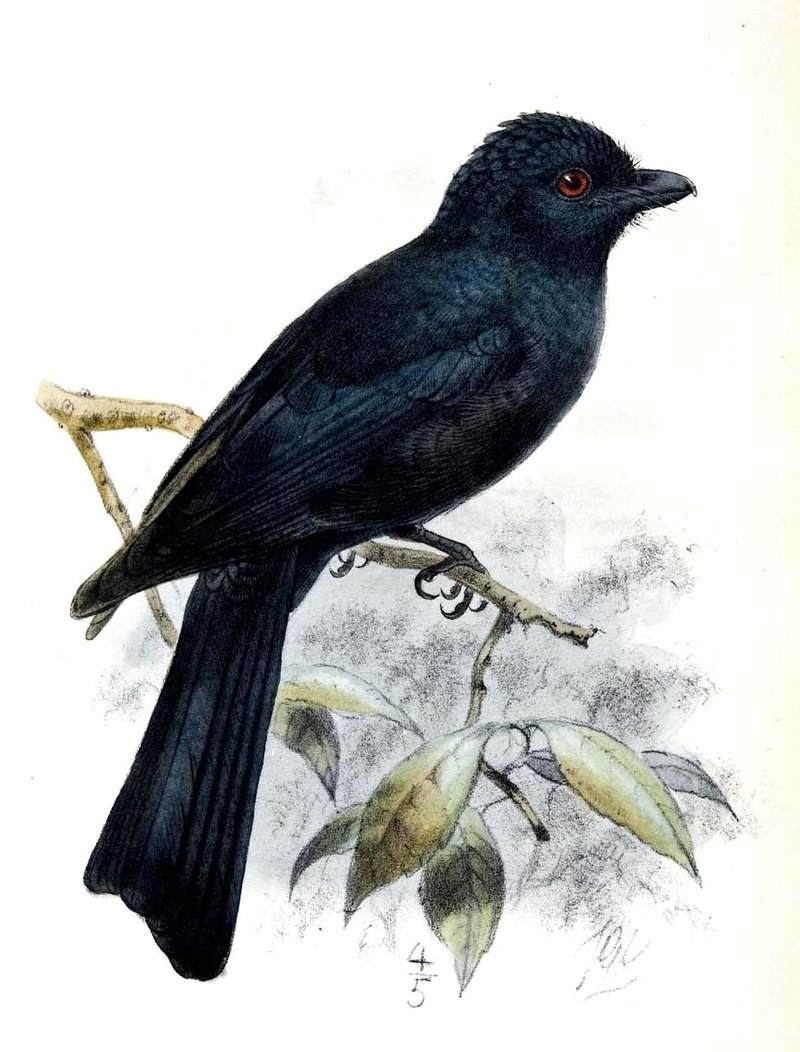
Chaetorhynchus papuensis
TAXONOMY
Chaetorhynchus papuensis A. B. Meyer, 1874, Arfak Mountains,
northwest New Guinea. Monotypic. Monarch-like in form and
BEHAVIOR
, this species has been confused with the monarchflycatcher
group in the past.
OTHER COMMON NAMES
English: Papuan drongo; French: Drongo papou; German:
Rundschwanzdrongo; Spanish: Drogo Papъa.
PHYSICAL CHARACTERISTICS
8–8.5 in (20–22 cm); 1.2–1.6 oz (35–45 g), both sexes. A very
small drongo, all black with blue gloss over head and back. It
has rictal bristles that extend beyond the bill tip, a short
rounded crest over the head, a square-tipped tail of 12 feathers,
a concealed white patch on the inner wing coverts under the
scapulars in both sexes, and brown eye; immatures are duskier
and glossless, and lack the concealed white wing spot.
DISTRIBUTION
Lower slopes of mountain ranges throughout mainland New
Guinea, between 1,600 and 5,000 ft (488–1,524 m) above sea
level.
HABITAT
Interior of primary and tall secondary hill rainforest.
BEHAVIOR
Solitary or in pairs within lower stages of rainforest where territorial
sallying for arthropod food on wing or perching motionless
on bare exposed twigs and branches, sitting near upright
with tail hanging down and occasionally twitching from
side to side or raised, fantail (Rhipidura)-like, on alighting. Sporadically
vocal, uttering two types of song of unknown function,
one an explosive jumble of nasal and metallic rasps and
squeaks (4.5–5.0 seconds), the other a loud melodious mix of
whistles, chips, and warbles; other calls comprise a range of
metallic clicks, slurs, and squeaks.
FEEDING ECOLOGY AND DIET
Forages by drongo-like sallying in more open mid and lower
strata of forest, capturing a range of insects; commonly associates
with feeding flocks of other bird species, benefiting from
insects disturbed.
REPRODUCTIVE BIOLOGY
Not known.
CONSERVATION STATUS
Not threatened.
SIGNIFICANCE TO HUMANS
None known.
Other popular Animals
Photo Gallery of - Pygmy drongo




 Animalia Life
Animalia Life